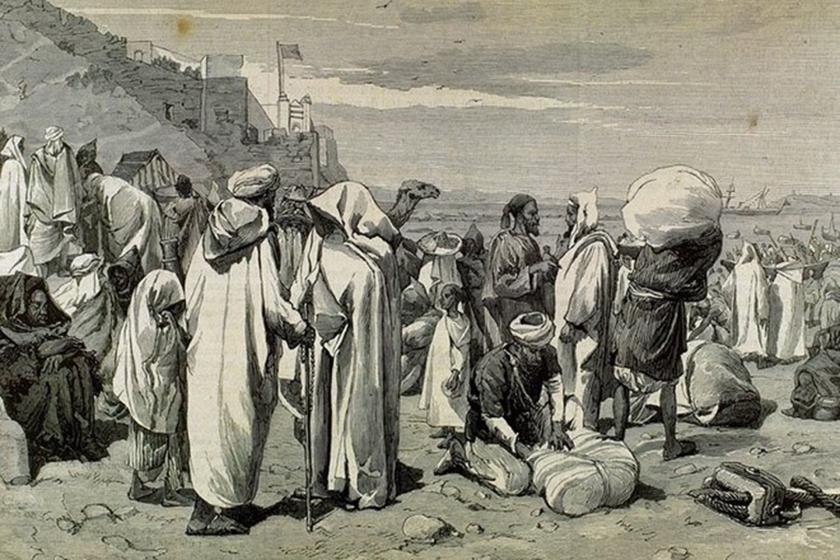TNT presents a series based on a 1901 directive from the
Ottoman government to contain cholera, plague and yellow
fever among ship-borne pilgrims heading for Mecca.
Two quarantine stations were used for this purpose, one
at Kameran Island near the southern end of the Red Sea
and the other, Ebu Saad, near Jiddah.//
hac-related health measure click here for a previous TNT
report on this subject.

Herewith the explanation of the directive to be implemented in
connection with the 'hac' (pilgrimage to Mecca) for the year 1317
(1901)
Istanbul
First paragraph: The Kameran Island quarantine station will remain
open from the beginning of the month of Receb-i Şerif until the end
of the month of Zilhicce to accept ships arriving there for quarantine.
This means, according to the European calendar: from the fifth of
November until 30 April.
Second paragraph: In the months Receb, Şa'ban, Ramazan, Şevval,
Zilkade and Zihicce (October-April), all ships bearing bills of health
and carrying pilgrims that come from outside the Babülmendep (strait
at the southern mouth of the Red Sea), with the exception of those
referred to in paragraph five of this directive, must proceed directly
to the Kameran quarantine station without stopping at any other Red
Sea port.
The Babülmendep strait (circle). Kameran Island (red dot
below) is located just north of Al Hudaydah:

Third paragraph: All those Moslem passengers coming to the Hicaz
(region of Arabia where Mecca and Medina are located) will be
considered pilgrims.
Fourth paragraph: Pilgrim ships are those carrying pilgrims to the
Hicaz or those carrying pilgrims from the Hicaz on return.
Fifth paragraph: Ships carrying just one pilgrim per 100 tonnage
will not be considered 'pilgrim ships'. These ships will be treated in
accordance with the stipulations of the directive for the 1867 cholera
outbreak and according to the texts of the bills of health regarding
these ships,
Sixth paragraph: Ships with not more than five pilgrims per 100
tonnage can proceed to the Ebu Saad quarantine station near Jiddah,
which is open all year-round, unload the pilgrims and commercial
goods destined for the Hicaz there and then continue with their voyage.
Seventh paragraph: Small vessels carrying pilgrims will be considered
'pilgrim ships'. These vessels that travel between ports in the Red Sea
will implement quarantine at the Ebu Saad quarantine station. Those
coming from outside the Babülmendep must go directly to Kameran
Island and they will be rejected from entering any other port on the
Arabian shore of the Red Sea.
Eighth paragraph: Pilgrim ships will be divided into three sections:
healthy, suspect and contagious passengers.
First section: Ships coming from ports that are free of cholera,
plague and yellow fever, and which are uncrowded, and which
have not experienced any sort of sickness incident among those
on board before and during the voyage or at the time of arrival
are considered to be disease-free.

There are two classes of disease-free ships:
First class: Ships coming from ports within the Red Sea, Egypt
and north of the Suez Canal that are free from cholera, plague and
yellow fever;
Second class: Ships coming from ports outside the Babülmendep,
such as from the coasts of the Persian Gulf, Arabia and Africa,
that are free of the aforementioned diseases.
Passengers on the ships in the first class who pass health exams will
immediately be given a 'bill of health'. All pilgrims and passengers in
the second class of ships will be examined at the quarantine station
and remain for 24 hours so their clothes and belongings can be
fumigated as a precaution.
//END of PART I//

Hiç yorum yok:
Yorum Gönder